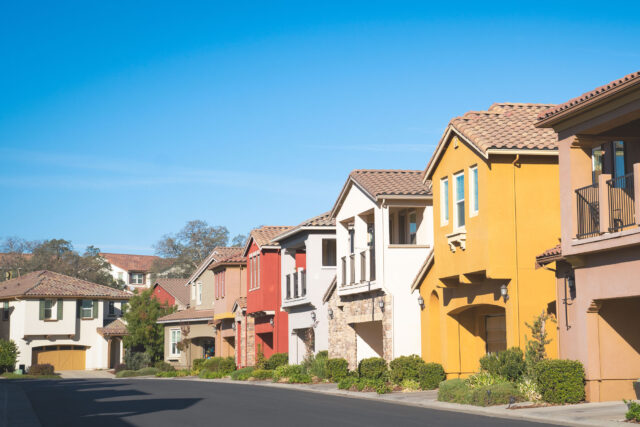Recently released census data offer a new window onto whether California’s housing is keeping up with demand. The state’s exorbitant housing costs have long been driven by too many potential buyers chasing after too few houses. The typical home value in California is considerably more expensive than in the rest of the country, and while incomes here are also higher, they are not high enough to match. Rents are also high, with California renters spending a larger share of their income on rent, and vacancy rates are consistently lower in California than elsewhere.
As part of the 2020 Census, the Census Bureau undertook a full accounting of the nation’s housing stock. By this measure, California’s new housing has fallen short of population growth. The state added 3.2 times more people than housing units over the last 10 years. There are now 2.93 Californians for every occupied housing unit, behind only Utah (3.09) and Hawaii (2.93), and far above the average of all other states (2.53).
The maps below show the percent change in housing prices over the last decade, as well as the percent change in total housing units and overall population. Though coastal housing is the most expensive, the biggest percent change in housing values has actually occurred in inland regions. To avoid higher coastal prices, many residents have moved to the Central Valley, east of the Bay Area, and the Inland Empire east of Los Angeles. In the process, they have driven up prices in their new neighborhoods as well. Growth in housing stock often follows high demand and price increases, but there are important exceptions. For instance, San Mateo and San Bernardino Counties have both had big price shocks but more modest increases in housing.
Simple comparisons of population change and housing development may understate the housing shortage by ignoring the constraint that expensive housing places on population growth. Prices are high because housing has not emerged to match demand; this in turn discourages people from moving to the state or pushes out those already here, keeping population growth low. The Legislative Analyst’s Office (LAO) tried to separate these factors and concluded that, to avoid extreme price increases, the state should have been building 70,000 to 110,000 more housing units beyond what it actually built in each year from 1980 to 2010. Summed over the whole 30-year period, this shortfall comes close to the 3.5 million new homes Governor Newsom has said the state needs by 2025.
California has not been matching the LAO’s number. Average annual production has actually slowed, from 147,000 per year in the first decade of the century to just 71,000 per year since. Construction dropped almost everywhere, but the drop was larger outside the expensive coastal counties (Los Angeles, Orange, and San Diego, as well as the Bay Area). And while the pace has picked up recently, it is not enough to overcome the years of lag.
The state has taken important steps recently to increase production and remove regulatory obstacles. The legislature made it easier to build in-law units, restricted local governments’ ability to block new developments, and significantly weakened zoning restrictions for single-family homes. These changes signal a more pro-housing stance, but it remains to be seen whether they are enough to boost production to the levels many consider necessary.







